Anise Quest
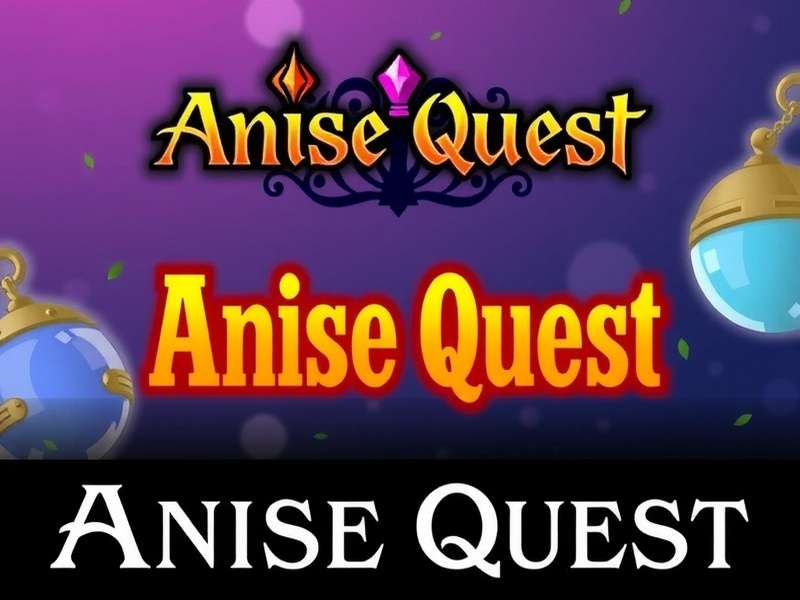
Welcome to the comprehensive wiki for Anise Quest – India's most beloved spice-themed mobile adventure game that has captured the imagination of millions across the subcontinent. Developed by a team of passionate Indian game designers and launched in early 2023, this game has redefined how cultural elements are integrated into mobile gaming experiences.
At its heart, Anise Quest is more than just a game – it's a celebration of India's rich spice heritage, trading history, and regional diversity. From the misty hills of Darjeeling to the sun-drenched coasts of Kerala, from the arid landscapes of Rajasthan to the fertile plains of Punjab, Anise Quest takes players on a virtual journey through India's most iconic spice-growing regions.
Overview of Anise Quest
Anise Quest was conceptualized in 2021 when a group of Indian game developers noticed a gap in the market – while Western games dominated the mobile gaming space, there were very few high-quality games that celebrated Indian culture and traditions in an authentic way.
After two years of development, involving consultations with historians, spice experts, and cultural consultants from various regions of India, Anise Quest was launched in March 2023 for both Android and iOS platforms. The game's name was chosen to highlight one of India's most versatile spices – anise – which has been used in Indian cuisine and traditional medicine for centuries.
What immediately set Anise Quest apart from other mobile games was its commitment to authenticity. The development team traveled to over 25 states across India, documenting traditional spice markets, farming techniques, and local trading practices to ensure the game accurately reflected India's diverse spice culture.
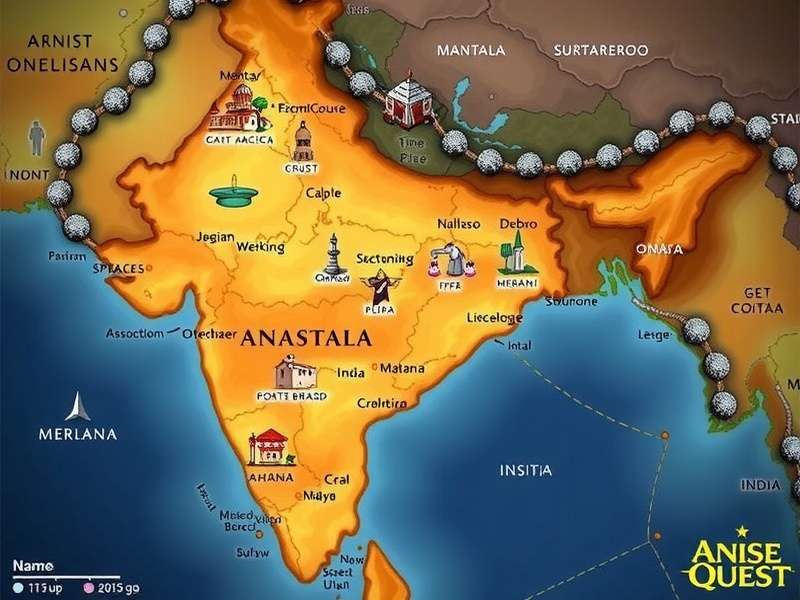
The game follows a freemium model, allowing anyone to download and play the basic version without any cost. This was a deliberate decision to make Anise Quest accessible to India's price-sensitive mobile gaming market, where many players are reluctant to pay upfront for games.
In-app purchases are available for cosmetic items, storage expansions, and special spices, but the developers have ensured that the core gameplay experience remains fully enjoyable without any mandatory purchases – a practice that has earned them widespread praise in Indian gaming communities.
One of the most innovative aspects of Anise Quest is its dynamic difficulty adjustment based on the player's region. New players from spice-growing regions start with slightly more advanced knowledge of local spices, creating a more personalized experience that resonates with players' real-world knowledge.
Did You Know?
The anise spice featured prominently in Anise Quest has been cultivated in India's Kashmir valley for over 400 years, introduced during the Mughal era. In the game, players can discover special Mughal-era anise plantations hidden in the Himalayan regions!
Since its launch, Anise Quest has been featured in major Indian tech publications and has received recognition from the Ministry of Tourism for promoting India's culinary heritage. The game has also partnered with several state tourism boards to create special in-game events tied to local spice festivals.
Gameplay Mechanics of Anise Quest
Anise Quest combines elements of adventure, strategy, simulation, and educational gaming to create a uniquely engaging experience. The gameplay is designed to be easy to understand for new players while offering enough depth to keep experienced gamers challenged.
Core Gameplay Loop
Players begin their journey in Anise Quest as a young spice merchant starting with a small cart and a modest collection of basic spices. The primary objective is to travel between Indian cities, purchasing spices at market rates and selling them at a profit in other locations.
Each city in Anise Quest has its own specialty spices based on real-world agricultural patterns. For example, Kochi specializes in black pepper and cardamom, while Srinagar is known for saffron and anise, and Kolkata offers unique Bengali spices like panch phoron.
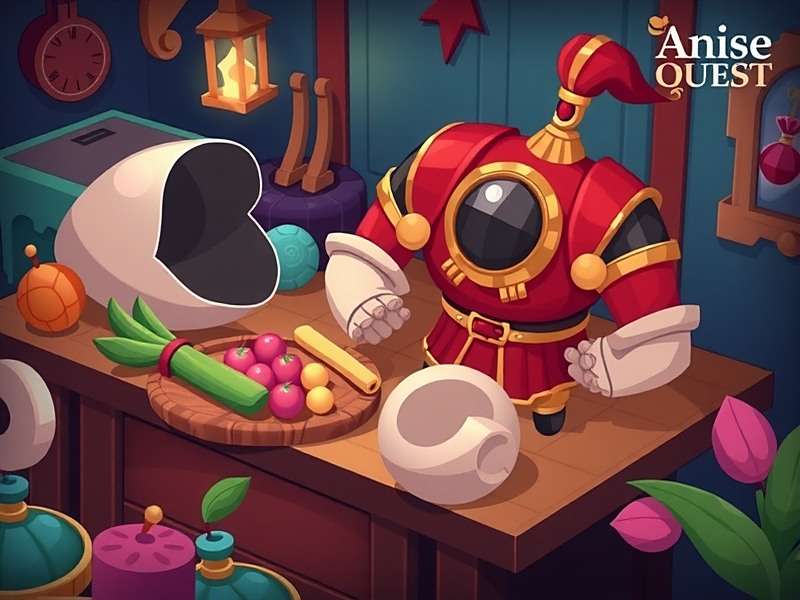
As players progress, they can invest their profits in better transportation – starting with a simple bullock cart, then upgrading to camels, horses, and eventually to boats for coastal trading and trains for longer distances. Each mode of transportation has different capacities, speeds, and durability against the various challenges encountered on the road.
Adventure and Exploration Elements
Travel in Anise Quest is not without risks and rewards. The journey between cities features dynamic events that can affect your spice collection:
• Bandits may attempt to steal your spices, requiring you to either fight them off using in-game resources or negotiate a safe passage
• Weather conditions like monsoons in Kerala or sandstorms in Rajasthan can damage certain spices or delay your journey
• Random encounters with other merchants who may offer rare spices or valuable information about market conditions
• Hidden spice plantations and ancient trading posts that can be discovered by exploring off the main routes
These elements add an exciting adventure component to Anise Quest, ensuring that no two journeys feel the same and rewarding players who are willing to take calculated risks.
Quest System
The quest system in Anise Quest is one of its most praised features, offering a wide variety of objectives that keep the gameplay fresh and engaging:
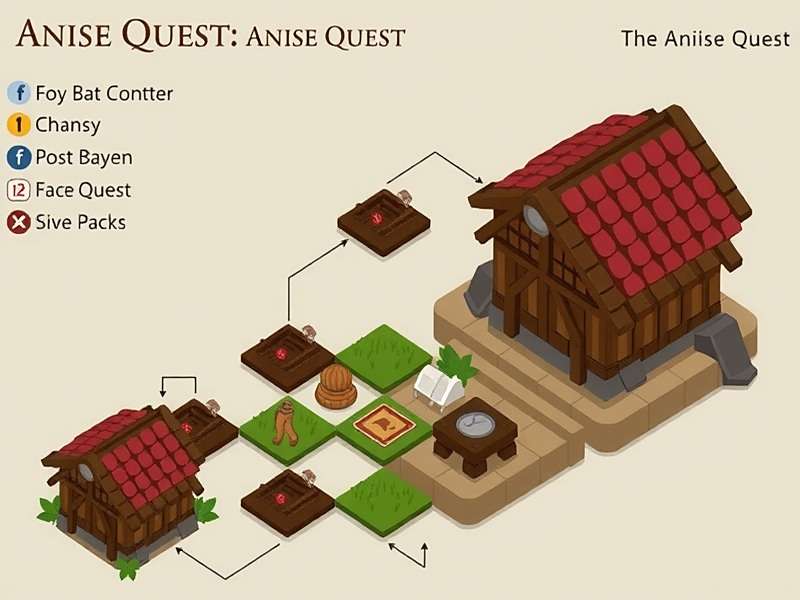
• Daily quests that encourage regular play, such as "Trade 5 kg of turmeric" or "Visit 3 different markets in one day"
• Storyline quests that unfold the game's narrative, involving players in historical spice trading events
• Regional quests that highlight specific cultural practices, like participating in a traditional spice auction in Hyderabad or helping prepare spices for a temple festival in Tamil Nadu
• Guild quests that require cooperation with other players to achieve larger objectives, such as organizing a national spice exhibition
Completing quests in Anise Quest rewards players with in-game currency (known as "Spice Coins"), reputation points, and sometimes rare spices or special items. Higher reputation unlocks new cities, trading privileges, and exclusive content.
Crafting and Processing
Unique among trading games, Anise Quest allows players to process raw spices into value-added products, significantly increasing their selling price. This crafting system adds another layer of strategy to the gameplay:
• Grinding spices into blends specific to different regional cuisines (Garam masala for North India, Chettinad masala for South India, etc.)
• Creating spice-based products like pickles, chutneys, and spice oils using traditional recipes
• Packaging spices in decorative containers for festival seasons, which sell at premium prices
Players can build processing facilities in different cities, each specializing in the local style of spice preparation. This encourages strategic placement of facilities and creates opportunities for profitable inter-city trade in processed goods.
Social and Multiplayer Features
Recognizing the social nature of Indian gaming, Anise Quest includes robust multiplayer features that have helped build a strong community around the game:
• Guilds: Players can form or join trading guilds, working together to control trade routes and complete large-scale quests
• Marketplaces: Player-run markets where guilds can set up shops and sell their specialty spices to other players
• Trading Competitions: Weekly and monthly events where players or guilds compete to see who can generate the highest profits or trade the most unique spices
• Spice Exchanges: A peer-to-peer trading system that allows players to directly exchange spices with each other, fostering a player-driven economy
These social features have proven particularly popular in India, where gaming often serves as a social activity among friends and family members who play together.
Download Statistics and Popularity in India
Key Statistics for Anise Quest in India
Anise Quest has achieved phenomenal success in the Indian mobile gaming market, exceeding all initial expectations. Within just three months of its launch, the game crossed 10 million downloads, and it reached the 50 million mark within a year – a milestone that few Indian-developed games have achieved.
The game's popularity is spread across urban and rural areas alike, with significant player bases in both metropolitan cities and smaller towns. This widespread appeal can be attributed to the game's optimization for low-end Android devices, which constitute approximately 75% of India's smartphone market.
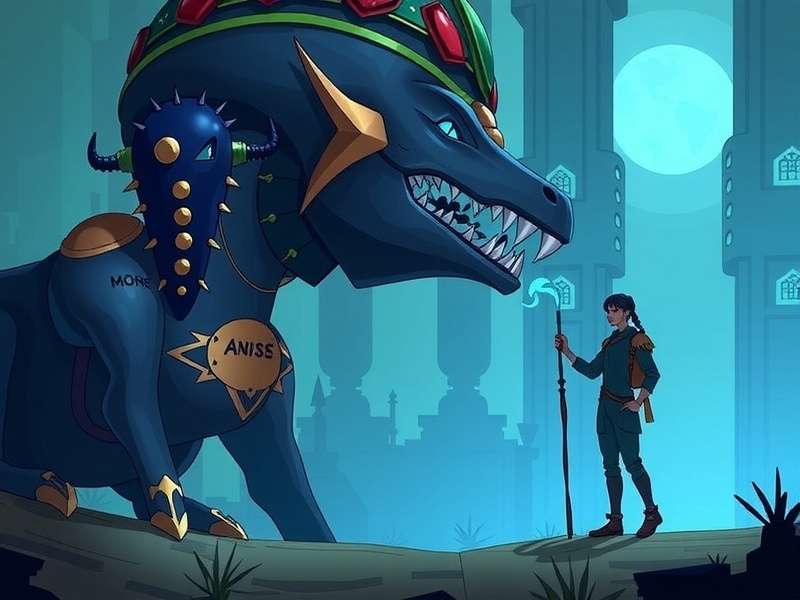
Regional analysis shows that Anise Quest has particularly strong penetration in the following states:
• Maharashtra: 18% of total players, with Mumbai and Pune as key hubs
• Karnataka: 15% of total players, driven by Bangalore's tech-savvy population
• Tamil Nadu: 14% of total players, with high engagement in Chennai and Coimbatore
• Uttar Pradesh: 12% of total players, showing strong growth in both Lucknow and smaller cities
• Kerala: 10% of total players, with exceptional retention rates due to the game's accurate representation of Kerala's spice culture
Download patterns for Anise Quest show interesting correlations with Indian festivals, with significant spikes observed during Diwali (150% increase), Holi (90% increase), and Onam (200% increase in Kerala). The development team has capitalized on these trends by releasing festival-specific content timed with these celebrations.
On the Google Play Store, Anise Quest has consistently ranked in the top 10 games in the adventure and simulation categories since its launch. It has also received the "Editors' Choice" award twice – once in 2023 and again in 2024 – for its innovative gameplay and cultural significance.
Despite the smaller iOS user base in India (approximately 5-7% of smartphone users), Anise Quest has performed exceptionally well on the App Store, often ranking in the top 20 games and achieving higher revenue per user than the industry average for Indian games.
Player Demographics
An interesting trend in Anise Quest's player base is its almost equal gender distribution – 52% male and 48% female players – which is unusual for most mobile games in India, which typically have a male skew of 70% or higher. This balanced demographic reflects the game's broad appeal across different segments of Indian society.
One of the key factors behind Anise Quest's download success is its relatively small file size (under 100MB for the base game), making it accessible even to users with limited data plans and storage capacity – critical considerations in the Indian market.
The game's offline mode has also contributed significantly to its popularity in rural areas with unreliable internet connectivity. Players can continue their spice trading journeys without an internet connection, with progress syncing once connectivity is restored.
Player Reviews and Reception in India
Anise Quest has received overwhelmingly positive reviews from Indian players across all major app stores and gaming communities. With an average rating of 4.8/5, it ranks among the highest-rated Indian-developed mobile games of all time.
Players particularly praise the game's attention to cultural detail and authentic representation of Indian spices and trading practices. Many reviews mention how the game has helped them discover new aspects of their own regional culture and traditions.
"As someone who grew up in a family of spice traders in Kerala, Anise Quest feels like coming home! The way they've recreated the Kochi spice market with such accuracy is amazing. My father, who has been in the spice business for 40 years, was shocked to see the details – from the way spices are displayed to the bargaining techniques. This game is a love letter to India's spice heritage."
"I've been playing Anise Quest every day for the past six months and I'm still not bored! What I love most is how different regions feel unique – the music, the architecture, even the way people dress and speak. The Rajasthani section with its camel caravans and desert trading posts makes me so proud of my culture. The daily quests are challenging but not impossible, perfect for my 30-minute commute to work."
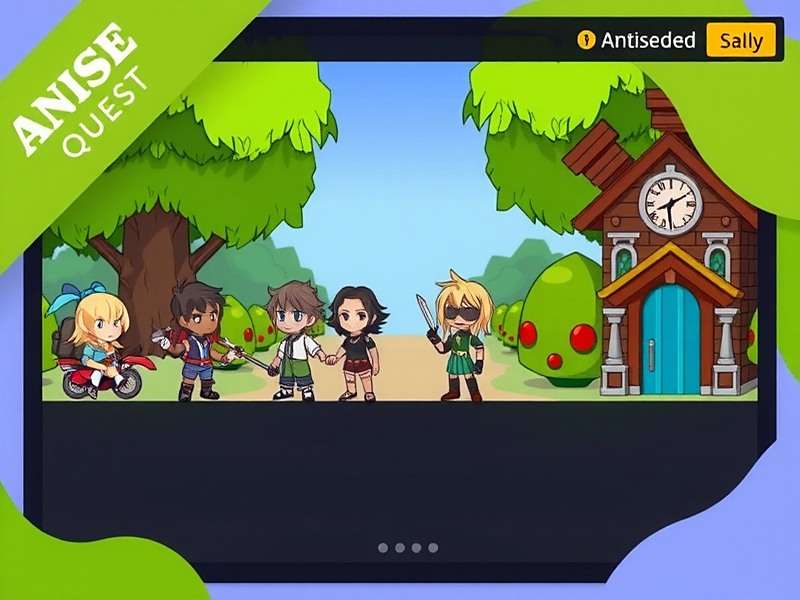
"Anise Quest is a fantastic game with only one small drawback – sometimes the server gets busy during festival events, especially Diwali. But the developers always compensate with extra rewards! I play with my entire family – my wife loves the cooking aspects, my teenage son is all about the trading strategies, and even my parents enjoy recognizing spices they've used all their lives. It's become a family bonding activity for us."
"As a history teacher, I appreciate how Anise Quest educates players about India's spice trade history in a fun way. The Bengal section is absolutely wonderful – the representation of Kolkata's old spice markets near Burrabazar is spot on. I've even recommended this game to my students as a supplementary learning tool! My only suggestion would be to add more female merchant characters from history."
"The best thing about Anise Quest is that it doesn't force you to spend money. I've been playing for free for a year and have progressed quite far. The in-app purchases are totally optional and don't give unfair advantages, which is refreshing. The Telugu language support is excellent – not just translations, but actual local idioms and references that make the game feel personal. The recent addition of Hyderabad's famous biryani spice blend quest was brilliant!"
Critical reception of Anise Quest has also been highly positive. Indian gaming publications have praised the game's innovative approach to cultural representation and its successful blend of entertainment and education.
TechCrunch India called it "a landmark in Indian mobile gaming that shows how cultural authenticity can coexist with engaging gameplay," while The Indian Express included it in their "Best Apps of 2023" list, noting that "Anise Quest does for Indian spices what Pokemon Go did for augmented reality – making it accessible and exciting for a new generation."
The game has also received recognition beyond the gaming world, winning the "Digital Innovation for Cultural Preservation" award from the Ministry of Culture in 2024 – a rare honor for a mobile game.
Localization and Regional Versions in India
One of Anise Quest's most celebrated features is its extensive localization for India's diverse linguistic and cultural landscape. Unlike many mobile games that simply translate text into different languages, Anise Quest has developed region-specific content that feels authentic to players from different parts of India.
Language Support
Anise Quest currently supports 16 Indian languages, with more planned for future updates. This includes:
• Hindi (with both Devanagari and Roman script options)
• Bengali
• Telugu
• Marathi
• Tamil
• Urdu
• Gujarati
• Kannada
• Malayalam
• Punjabi (both Gurmukhi and Roman scripts)
• Odia
• Assamese
• Konkani
• Manipuri
• Nepali
• Sanskrit (for special historical quests)
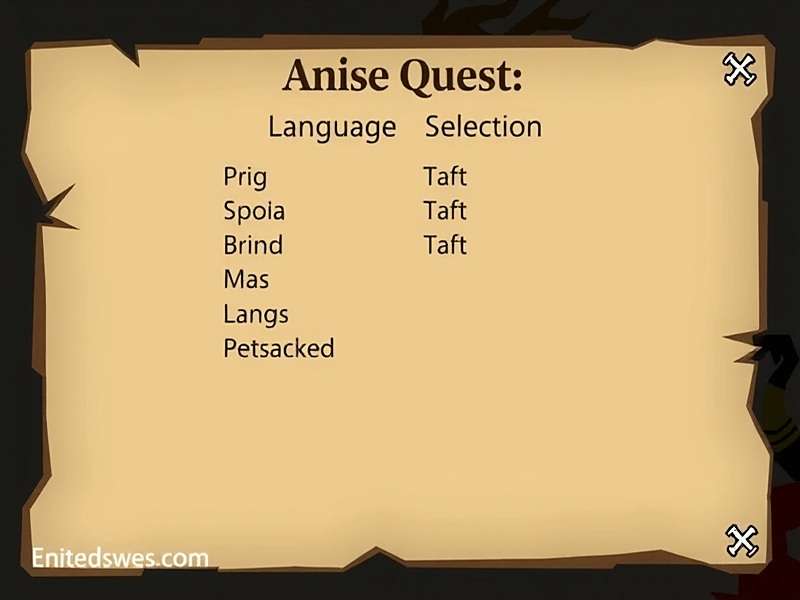
What sets Anise Quest's language support apart is its attention to regional dialects and colloquialisms. For example, the Hindi version uses different vocabulary and expressions depending on whether the player is in Uttar Pradesh, Bihar, or Madhya Pradesh, creating a more authentic experience.
The game's voice acting – used for important quest dialogues and market announcements – is performed by native speakers from each region, ensuring accurate pronunciation and intonation. This level of detail has been particularly appreciated in regions with distinct linguistic traditions.
Regional Content Differences
Beyond language, Anise Quest features significant content variations tailored to different regions of India:
North India
The North Indian version of Anise Quest emphasizes Mughal-era trading traditions, with quests involving royal kitchens and court spices. Players encounter spices like saffron from Kashmir, anise from Uttarakhand, and fenugreek from Punjab.
The architecture in North Indian cities features Mughal influences – domes, arches, and intricate tile work. The soundtrack incorporates instruments like the sitar, tabla, and shehnai, with melodies inspired by Hindustani classical music.
South India
South Indian content in Anise Quest highlights the ancient spice trade with Southeast Asia. Players can trade spices like black pepper from Kerala, cardamom from Karnataka, and curry leaves from Tamil Nadu.
Cities feature Dravidian architecture with temple complexes and marketplaces围绕着它们。游戏音乐融入了维纳琴、姆里丹加姆等乐器,采用了卡纳提克古典音乐风格。
Special quests involve temple festivals, traditional Ayurvedic medicine preparation, and the famous Chettinad spice merchants' trading practices.
East India
East Indian content in Anise Quest focuses on riverine trade along the Ganges and Brahmaputra. Players can trade unique spices like panch phoron from Bengal, tejpatta from Assam, and king chili from Nagaland.
The architecture features terracotta temples and colonial-era trading posts. The soundtrack includes Bengali baul music and Assamese bihu rhythms, with instruments like the esraj and dhol.
West India
West Indian content highlights the maritime spice trade through ports like Mumbai and Kochi (which has cultural influences from both West and South). Players trade spices like cloves, cinnamon, and nutmeg that historically arrived through these ports.
Architecture features Portuguese-influenced buildings alongside traditional Gujarati havelis and Maharashtrian wadas. The soundtrack includes dandiya and garba rhythms, with instruments like the dholak and shehnai.
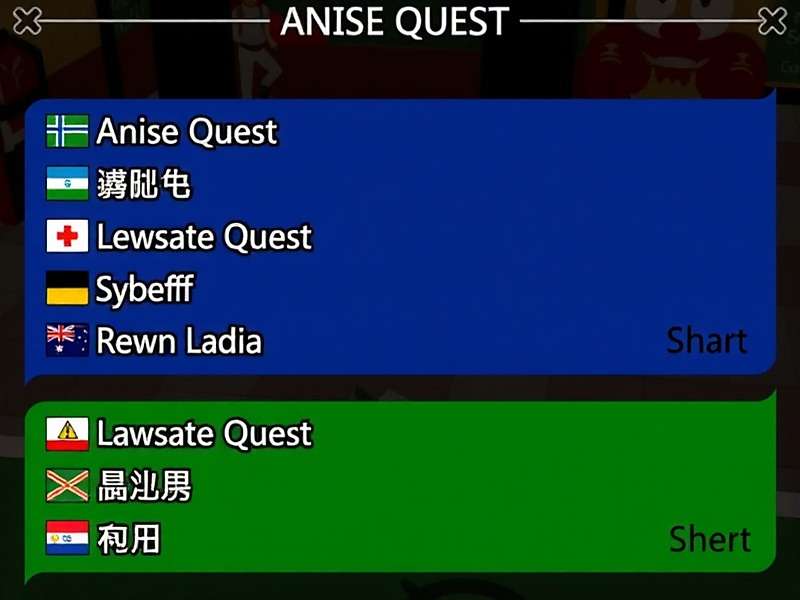
Cultural Adaptations
Anise Quest goes beyond surface-level localization by adapting gameplay elements to fit regional cultural practices:
• In Punjab, trading involves more bargaining minigames, reflecting the real-world tradition of lively market negotiations
• In Gujarat, players can participate in cooperative trading groups that reflect the region's traditional business communities
• In Tamil Nadu, certain spices can only be traded during specific astrological times, reflecting the influence of traditional calendars on business activities
• In Bengal, seasonal spice trading follows the Bengali calendar, with special emphasis on the monsoon season's impact on spice quality
These cultural adaptations have been widely praised for their sensitivity and accuracy, with many players noting that Anise Quest taught them things about their own culture they didn't previously know.
Indian Player Strategies and Tips for Anise Quest
Indian players have developed sophisticated strategies for Anise Quest that leverage both in-game mechanics and real-world knowledge of Indian spices and trading practices. These strategies, shared through community forums and regional gaming groups, can help new players progress more quickly and efficiently.
Trading Strategies
Successful trading is the foundation of progress in Anise Quest, and Indian players have identified several key strategies:
Regional Trading Routes (Recommended by Top Players)
1. Malabar Coast Route: Buy black pepper in Kochi → Sell in Mumbai → Buy cloves → Sell in Chennai
2. Himalayan Route: Buy saffron in Srinagar → Sell in Delhi → Buy anise → Sell in Amritsar
3. Ganges Valley Route: Buy turmeric in Varanasi → Sell in Kolkata → Buy panch phoron → Sell in Lucknow
Understanding Seasonal Fluctuations: Just like in real India, spice prices in Anise Quest fluctuate with the seasons. Savvy players track these patterns:
• Monsoon season (June-September) increases prices of dried spices like red chili and coriander, as fresh supplies are limited
• Winter (December-February) sees higher prices for warming spices like cinnamon and cardamom
• Harvest seasons for specific spices create temporary price drops in their region of origin – a perfect time to stock up
Processing for Profit: Experienced players recommend processing raw spices into blends before selling, which can increase profits by 30-50%:
• Create garam masala in North India cities for maximum profit when sold in South India
• Prepare Chettinad masala in Tamil Nadu for export to Mumbai and Delhi
• Make panch phoron blends in Bengal to sell along the Ganges trade route
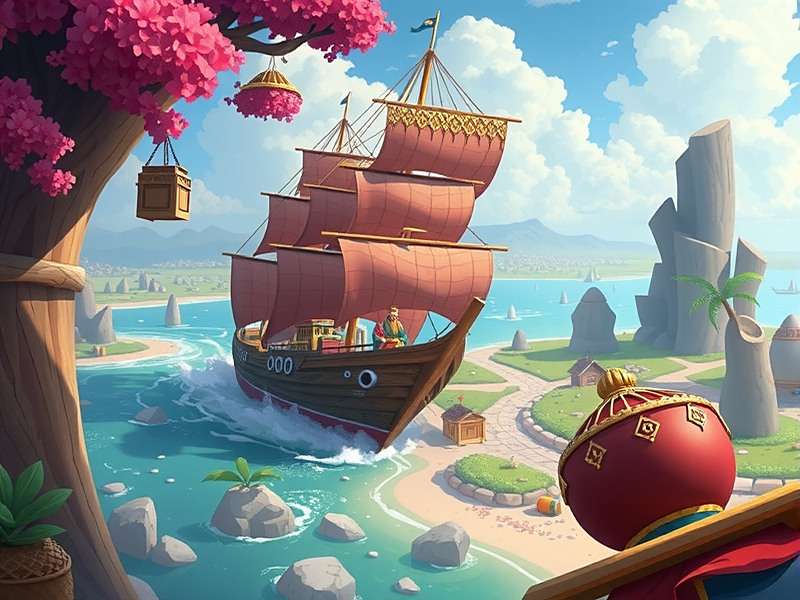
Quest Completion Strategies
Efficient quest completion is key to progressing in Anise Quest. Indian players have developed these optimal strategies:
Daily Quest Optimization: Complete daily quests in this order to maximize efficiency:
1. First, complete any "visit specific city" quests while traveling between markets
2. Next, finish trading quests that align with your planned route
3. Save processing/crafting quests for nighttime when market activity is lower
Story Quest Preparation: For major story quests, especially those involving historical events, players recommend:
• Researching the real historical event (many players find this adds to the enjoyment!)
• Stockpiling relevant spices 2-3 days before the quest appears
• Joining forces with players from the region featured in the quest for insider tips
Guild Quest Coordination: Guild quests are most efficiently completed through careful coordination:
• Assign members to specialize in different tasks based on their region's strengths
• Schedule quest work around Indian standard time to ensure maximum participation
• Save large transport upgrades for guild quest periods to move spices between members efficiently
Festival Event Strategies
Festival events in Anise Quest offer some of the best rewards, but require special strategies:
Diwali Strategy: Diwali is the biggest event in Anise Quest, with special gold-plated spices and limited-time markets:
• Start stockpiling cardamom, cloves, and saffron one month before Diwali
• Focus on completing decoration quests early to unlock premium market access
• Save all special spices from previous events to trade with other players during Diwali market
Holi Strategy: The Holi event features color-themed spices and celebration quests:
• Invest in turmeric and saffron, which are used in both real Holi celebrations and in-game events
• Complete group celebration quests with friends for bonus rewards
• Participate in color-throwing minigames early in the day when server traffic is lower

Regional Festival Focus: Players recommend focusing on events tied to their own regional festivals for maximum advantage:
• South Indian players should prioritize Pongal and Onam events, which feature spices familiar to the region
• North Indian players have an edge in Lohri and Guru Nanak Jayanti events
• East Indian players can excel in Durga Puja and Bihu events with their regional knowledge
Resource Management
Effective resource management is crucial for long-term success in Anise Quest:
The 40-30-20-10 Rule: Top players recommend this resource allocation strategy:
• 40% of resources in stable, high-demand spices (turmeric, cumin, coriander)
• 30% in regional specialty spices that maintain value across India
• 20% in rare spices that fluctuate but can yield high profits
• 10% in crafting materials for value-added products
Transportation Investments: Upgrade your transportation in this order for maximum efficiency:
1. First, increase storage capacity to take advantage of bulk purchase opportunities
2. Next, improve durability to handle difficult terrains and bandit encounters
3. Finally, invest in speed upgrades once your trade network expands
Facility Placement: Build processing facilities strategically:
• In Mumbai for blending Western Indian spices for export
• In Hyderabad for preparing biryani and curry blends
• In Kolkata for creating pickles and preserved spice products
• In Delhi for Mughal-style spice preparations with royal appeal
Localized Events and Promotions in India
Anise Quest has gained widespread acclaim for its innovative localized events that celebrate India's diverse festivals and cultural traditions. These events not only boost player engagement but also deepen the game's connection to Indian culture.
Major Festival Events
Diwali Special Event: The Diwali event in Anise Quest is the game's biggest annual celebration, running for 15 days leading up to the festival:
• Players can decorate their in-game spice shops with rangoli and diyas, which attract special customers
• Limited-time quests involve creating special Diwali spice mixtures for temple offerings
• A virtual "Lakshmi Puja" minigame where players arrange spices in traditional patterns to receive blessings that boost trading luck
• Special gold-plated anise seeds that serve as premium currency during the event
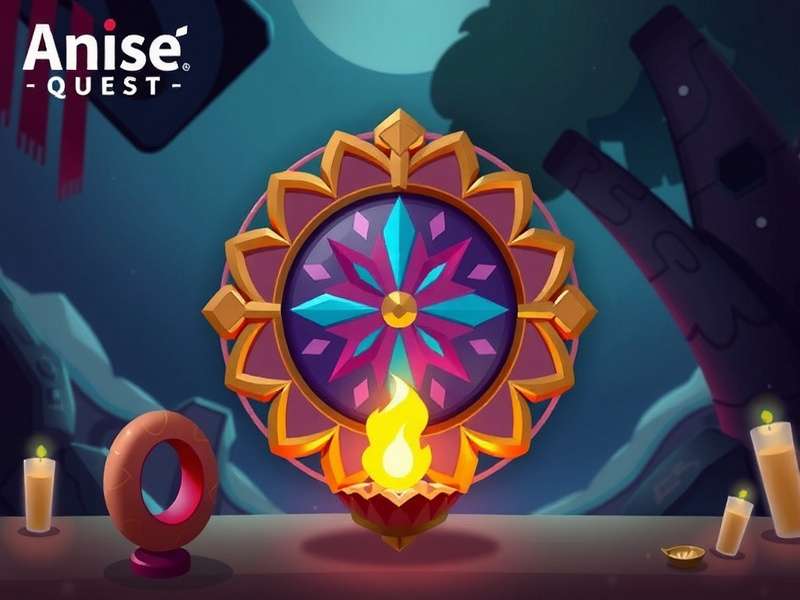
Holi Celebration: The Holi event transforms Anise Quest's game world with vibrant colors and festive activities:
• Players can participate in color-throwing minigames that temporarily change spice colors (and values!)
• Special "gulal spice" that can be traded for unique festival rewards
• Quest to create traditional Holi sweets using in-game spices
• Community event where players work together to create the largest virtual rangoli in the game's history
Regional Festival Highlights: Anise Quest features detailed events for regional festivals, including:
• Onam (Kerala): Boat race minigames with spice-laden boats, Onam sadya preparation quests using regional spices
• Pongal (Tamil Nadu): Rice and spice offering quests, virtual jallikattu-inspired competitions with special rewards
• Durga Puja (West Bengal): Pandel decoration contests, special Bengali five-spice blend quests, cultural performances
• Gurpurab (Punjab): Langar preparation events using community-shared spices, kirtan-inspired soundtracks
Real-World Collaborations
Anise Quest has partnered with several real-world organizations in India to create unique in-game events:
Spice Board of India Collaboration: This ongoing partnership has resulted in:
• "Spice Certification" quests where players learn about authentic Indian spice cultivation
• Virtual tours of real spice plantations across India, with educational content
• Limited-time events tied to National Spice Festival in Kochi
• Special in-game items that can be redeemed for real spice samples through participating stores
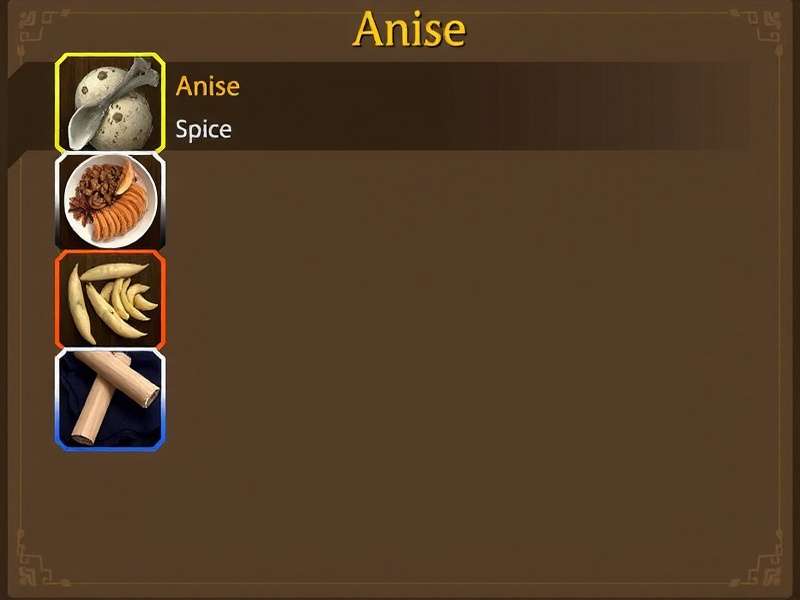
State Tourism Partnerships: Anise Quest has partnered with several state tourism departments:
• Kerala Tourism: Special backwater trading routes and Ayurvedic spice quests
• Rajasthan Tourism: Desert trading caravans and royal spice market events
• Karnataka Tourism: Coffee and spice plantation tours within the game
These partnerships often include special promotions where players can earn discounts on real-world tourism experiences related to spices.
Indian Brand Collaborations: The game has featured limited-time collaborations with major Indian brands:
• MDH Spices: Special in-game versions of popular MDH spice blends, with unique trading properties
• Tata Tea: Tea and spice combination quests, virtual tea estate tours
• Amul: Dairy and spice combination recipes for special events like Holi and Diwali
Tournament Circuit
Anise Quest has established a national tournament circuit in India that has gained significant popularity:
• Regional Qualifiers: Held in 12 major cities including Mumbai, Delhi, Bangalore, Chennai, and Kolkata
• National Finals: Annual event held in Kochi (the "Spice Capital of India") with live streaming on YouTube and Hotstar
• Prizes: Cash prizes, gaming equipment, and unique in-game items, with top players receiving trips to major spice-growing regions in India
• Community Involvement: Local tournaments organized by player communities, often coinciding with regional festivals
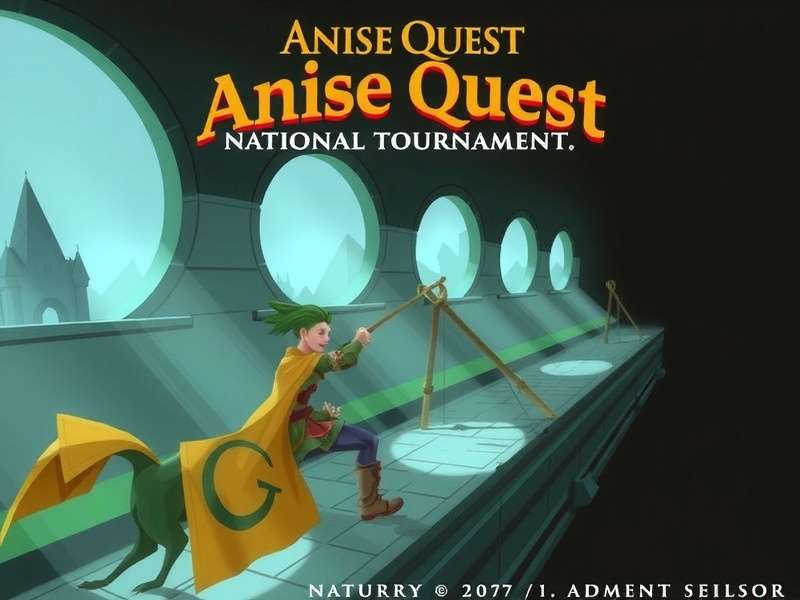
The tournament format emphasizes both individual skill and team cooperation, with different categories for trading efficiency, quest completion speed, and spice knowledge. Many participants report that the tournaments have helped them connect with other spice enthusiasts from across India.
Community-Driven Events
Some of Anise Quest's most popular events are organized by the player community itself, with support from the development team:
• Spice Exchange Meets: Real-world gatherings where players trade in-game items and share strategies, often held in local markets
• Regional Challenges: Community-organized competitions between players from different states
• Cultural Showcase Events: Players share real-world recipes and spice knowledge alongside their in-game achievements
• Charity Events: In-game fundraisers where players donate virtual spices that are converted into real-world donations to support spice farmers
These community-driven events have helped foster a strong sense of belonging among Anise Quest players, turning the game into a cultural phenomenon that extends beyond mobile screens.
Player Community and Discussions in India
The Anise Quest community in India is one of the most active and engaged among mobile game players, with millions of players connecting through various platforms to share strategies, celebrate events, and discuss the game's ever-evolving content.
Regional Social Media Groups
Facebook and WhatsApp groups form the backbone of Anise Quest's community in India, with over 500 regional groups dedicated to the game:
• The largest group, "Anise Quest India Traders," has over 350,000 members and features daily discussions on trading strategies
• Regional groups like "Anise Quest Kerala Spices" and "North India Anise Traders" focus on area-specific content and trading routes
• Language-specific groups ensure that players who prefer regional languages can fully participate in community discussions
These groups are not just about gameplay – many organize real-world meetups, share traditional spice recipes, and even exchange information about real spice markets and cultivation practices.
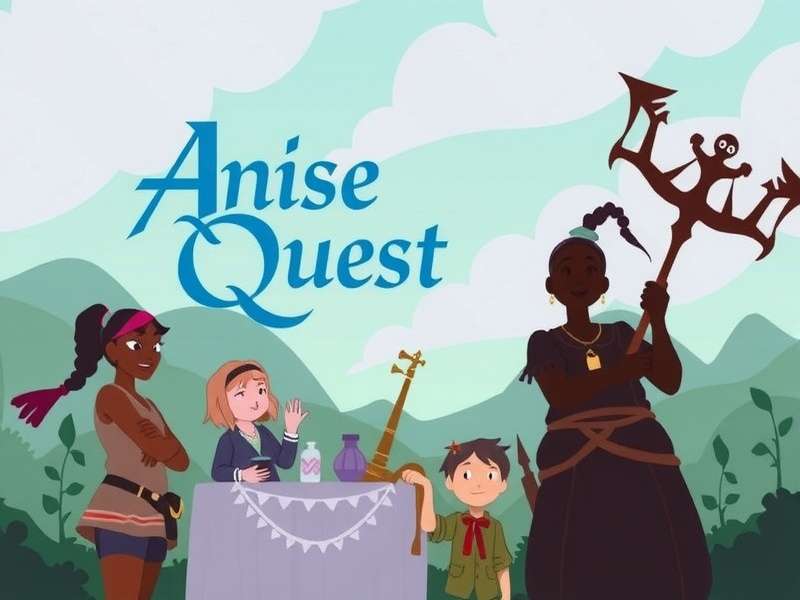
YouTube and Streaming Communities
Anise Quest has spawned a vibrant content creation community in India, with hundreds of YouTube channels dedicated to the game:
• Channels like "Spice King Anish" and "Punjab Spice Trader" have over 1 million subscribers each, offering strategy guides and gameplay videos
• Regional language content is particularly popular, with major channels in Hindi, Tamil, Telugu, Bengali, and Malayalam
• Live streams during major events attract tens of thousands of concurrent viewers, with streamers often coordinating community challenges
Many of these content creators have formed partnerships with the Anise Quest development team, providing early feedback on new features and helping promote events to their audiences.
Forums and Discussion Boards
For more in-depth discussions, Anise Quest players gather on various forums:
• The official Anise Quest forums feature sections dedicated to different regions of India, with developers actively participating in discussions
• Indian gaming forums like IGN India and Games2Win have dedicated Anise Quest sections with detailed strategy guides
• Reddit's r/AniseQuest community, with over 150,000 members, features weekly discussion threads focused on regional strategies
These forums often serve as a bridge between players and developers, with many player suggestions from these platforms being implemented in game updates.
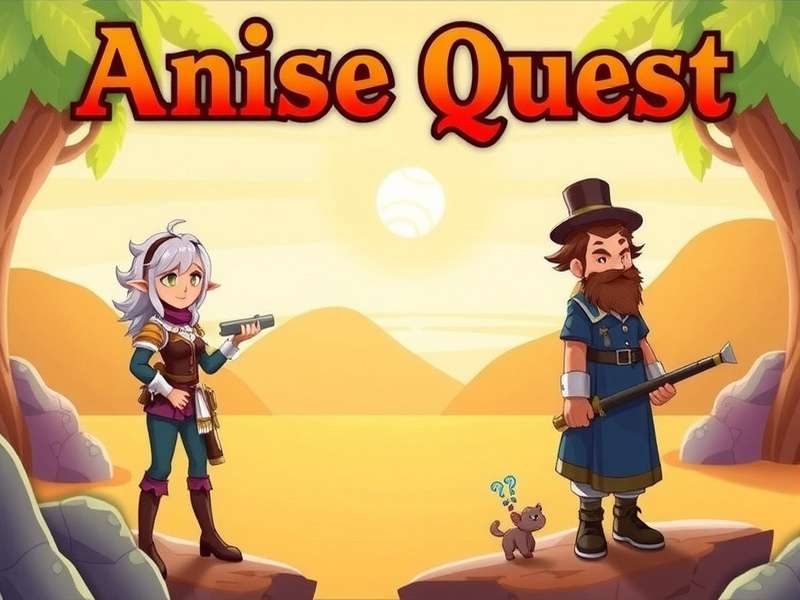
Community Initiatives
The Anise Quest community in India has organized several notable initiatives that extend beyond the game:
• Spice Heritage Project: Players documenting real-world spice traditions and sharing them through the game's social channels
• Farmer Support Program: A community-driven initiative that connects players with spice farmers, with a portion of in-game purchases going to support sustainable farming practices
• Educational Workshops: Player-organized events teaching children about Indian spices and trading history, using Anise Quest as an educational tool
• Regional Competitions: Community-organized tournaments with local prizes, often held in conjunction with real spice festivals
These initiatives demonstrate the unique connection between Anise Quest and Indian culture, with the game serving as a catalyst for real-world engagement with spice traditions.
Developer-Community Interaction
The developers of Anise Quest have built a reputation for their exceptional engagement with the Indian player community:
• Monthly "Spice Chat" sessions on YouTube where developers answer player questions, often featuring special guests like spice experts and historians
• Regional focus groups where players from different states provide feedback on upcoming content
• Community challenge events where player suggestions are incorporated into special in-game quests
• "Player Ambassador" program with representatives from each state who help gather feedback and promote positive community interactions
This two-way communication has been instrumental in shaping Anise Quest into a game that truly reflects the diversity and richness of Indian culture, while maintaining engaging gameplay mechanics.
Future Updates and Roadmap for Anise Quest
The development team behind Anise Quest has outlined an ambitious roadmap for the game's future, with several exciting updates planned that will further enhance its Indian cultural elements and gameplay depth.
Upcoming Regional Expansions
The next major update for Anise Quest, scheduled for release in late 2024, will focus on expanding content for Northeast India:
• New cities including Guwahati, Shillong, and Imphal with unique architectural styles
• Rare spices from the region such as Sichuan pepper, king chili, and Northeast India cardamom
• River and mountain trading routes specific to the Northeast's geography
• Cultural quests featuring traditional festivals like Hornbill Festival and Bihu
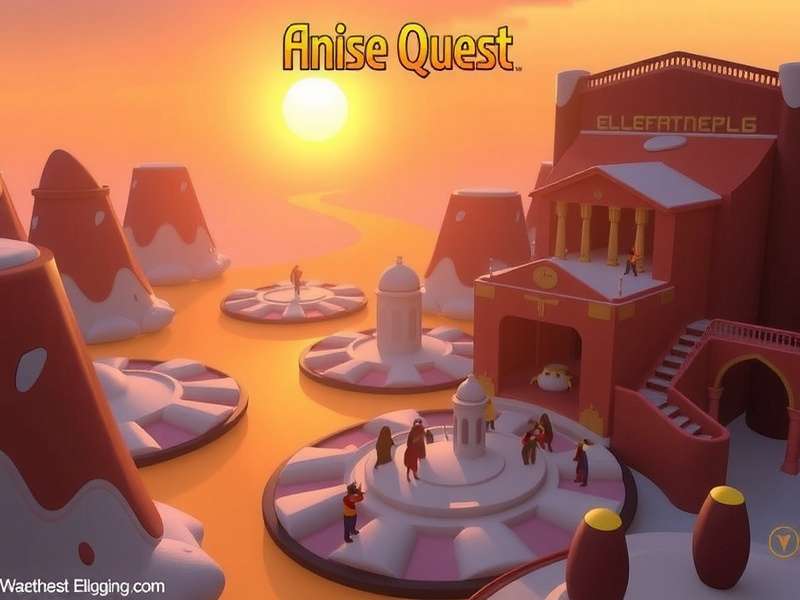
Planned for 2025 is an expansion focusing on the Andaman and Nicobar Islands and Lakshadweep:
• Maritime trading routes connecting these islands with mainland India
• Unique sea spices and coconut-based products
• Island-specific trading practices and cultural events
• Boat races and maritime challenges inspired by traditional competitions
New Gameplay Features
Several exciting new gameplay features are in development for Anise Quest:
Spice Auction Houses: Scheduled for release in the next update, this feature will introduce:
• Live auction events in major cities, modeled after real Indian spice auctions
• Bidding mechanics that require quick thinking and knowledge of market trends
• Special auction-only spices that can't be obtained through regular trading
• Guild auctions where players can pool resources to bid on high-value items
Spice Museum and Research: Coming in early 2025, this educational feature will allow players to:
• Collect rare and historical spice samples to display in their own museums
• Conduct research on spice properties to unlock new trading advantages
• Host virtual museum tours for other players to earn reputation points
• Contribute to community research projects on endangered spice varieties
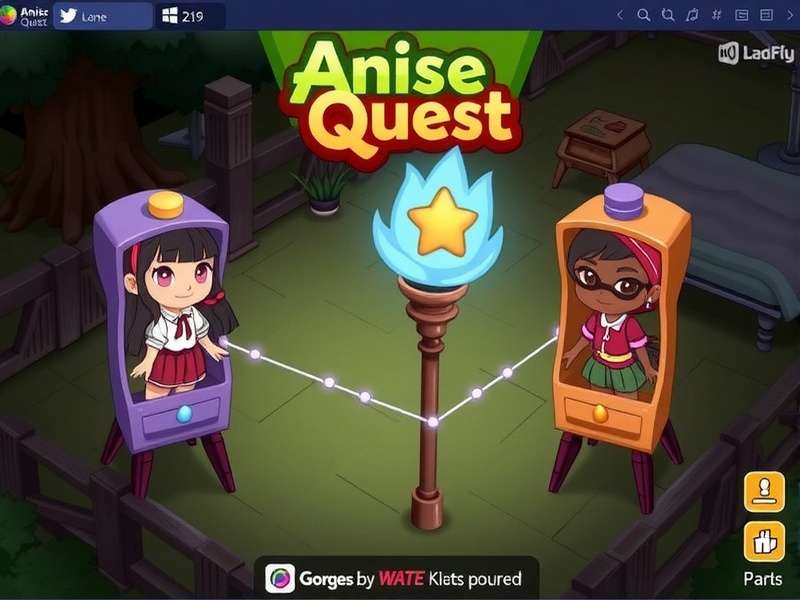
Seasonal Farming: A highly anticipated feature allowing players to:
• Purchase and manage their own small spice farms in different regions
• Plant, nurture, and harvest spices according to real seasonal patterns
• Hire farm workers with different skills based on regional agricultural practices
• Participate in regional farming competitions during harvest seasons
Enhanced Social Features
Future updates will strengthen Anise Quest's social aspects with several new features:
• Spice Markets: Player-run permanent markets in major cities, where players can set up shops and establish their own trading empires
• Family Trading Dynasties: New system allowing players to create multi-generational trading families, with inherited skills and properties
• Cultural Exchange Programs: Features that allow players from different regions to learn about each other's spice traditions through in-game interactions
• Regional Trading Alliances: Advanced guild system allowing for complex economic relationships between different regions
Technological Improvements
The development team is working on several technological enhancements for Anise Quest:
• 5G Optimization: Preparing the game to take advantage of India's expanding 5G network with enhanced multiplayer features and more complex in-game events
• Augmented Reality Mode: Testing an AR feature that would allow players to "find" virtual spices in real-world locations, particularly in spice markets and stores
• AI-Powered Market Simulation: Developing more sophisticated market algorithms that better simulate real-world price fluctuations based on weather, events, and player behavior
• Accessibility Improvements: Expanding accessibility features to ensure the game can be enjoyed by players with different abilities, including voice commands in regional languages
These planned updates demonstrate the developers' commitment to evolving Anise Quest alongside its Indian player base, ensuring that the game remains fresh, relevant, and engaging for years to come while deepening its connection to India's rich spice heritage.
This game is recommended by daman games. To discover more quality Indian games, please visit daman games.